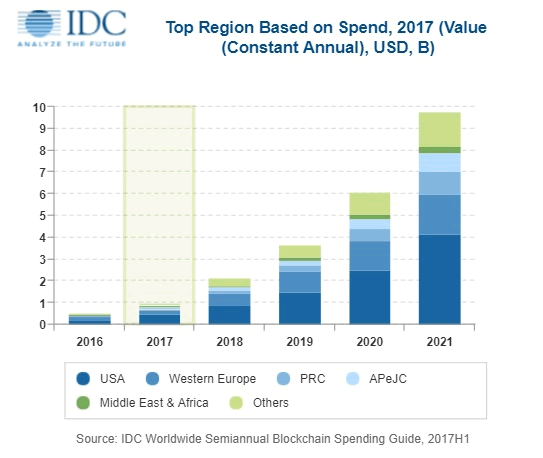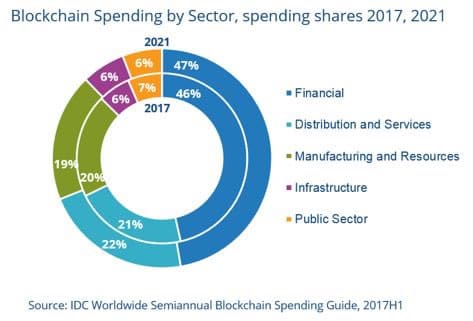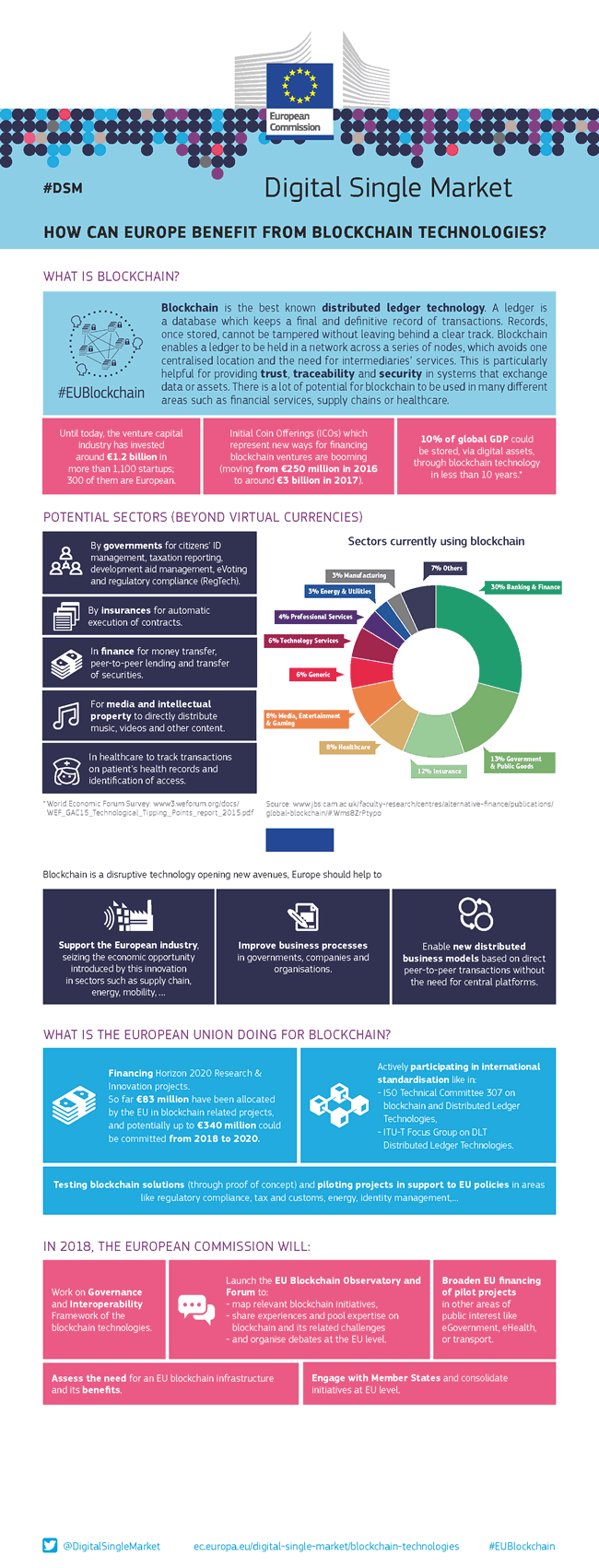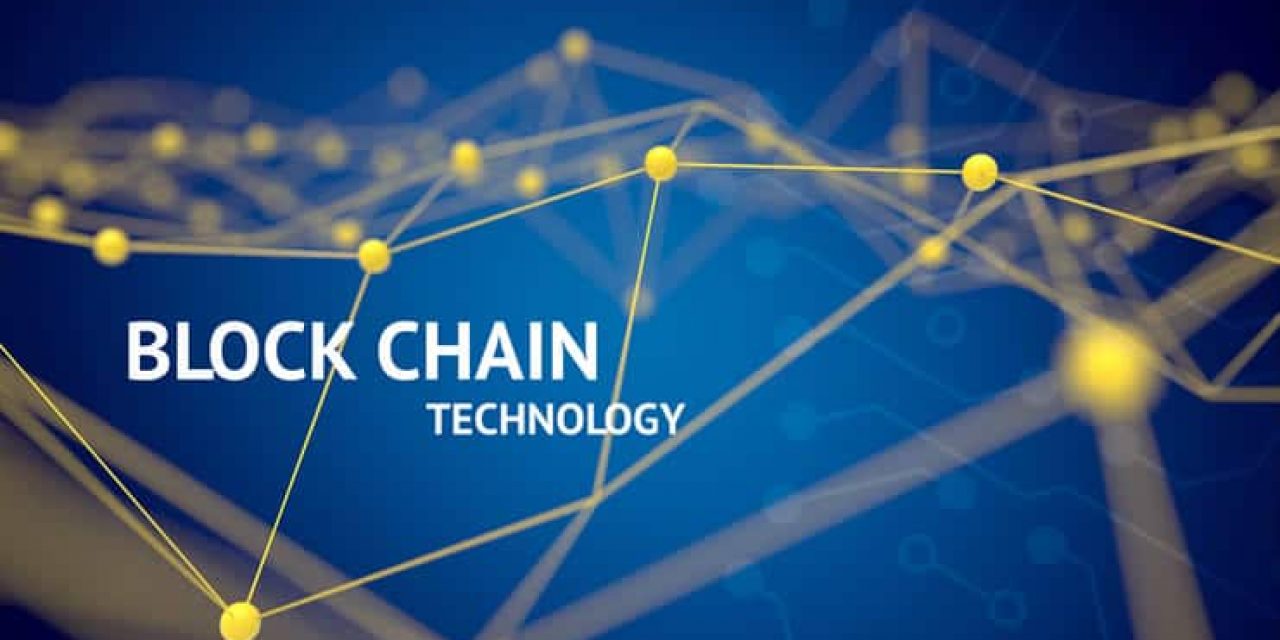An overview of the main blockchain spending patterns in Western-Europe (industries and blockchain use cases) until 2021 and the EU blockchain initiatives 2018-2020, including the launch of the Blockchain Observatory and Forum, the €340 million EU blockchain fund and the role of partner ConsenSys.
An increasing number of countries is looking at the possibilities of blockchain technology and taking initiatives to boost the deployment of the the technology behind Bitcoin.
After the 2017 announcement of Alastria, the first self-proclaimed multi-sector blockchain ecosystem across the globe in Spain, ample initiatives have followed. In many cases it concerns reports as we’ve seen in among others the UK and in the US, with the Chamber of Digital Commerce and the NIST blockchain technology draft end January 2018.
These reports then either serve as guidance for policy (and specific target audiences), either as part of a mix in which projects and initiatives are announced. It happens at national levels, it happens at industry levels, it happens at global levels (think the blockchain buzz at Davos 2018) and it happens at supra-national, territorial levels.

Early February 2018 also the EU joined the ranks of those supra-national institutions looking to develop the blockchain ecosystem. For the EU it is part of its Digital Single Market approach which comprises far more initiatives such as the reform of its data protection framework, consisting of three new sets of rules of which the GDPR (General Data Protection Regulation) and the ePrivacy Regulation no doubt are the best known ones (with the so-called deadline for GDPR compliance coming first, in May).
The EU data reform and blockchain – a future fit?
We don’t mention the GDPR just like that in the scope of the EU blockchain initiatives tackled in this article.
When you talk about data, especially digital and personal data, and things like consent and even explicit consent, several duties for data controllers and processors whereby record-keeping and audit trails matter, data subject rights, legal grounds for lawful processing of personal data, rules for data transfers and so forth, blockchain and smart contracts really are never too far away.
I see blockchain as a game changer and I want Europe to be at the forefront of its development. We need to establish the right enabling environment – a Digital Single Market for blockchain so that all citizens can benefit, instead of a patchwork of initiatives (Commissioner for the Digital Economy and Society Mariya Gabriel)
In the end, what else is such a thing as consent than a contract and what else is data portability than a mix of data flows with particular (often contractual) purposes, interactions/exchanges and a contract in the semi-legal sense? There are more touchpoints, concerning security, information flows and even recommended technologies in the GDPR such as encryption, whereby cryptography obviously is also an inherent part of the blockchain data model. So, who knows?
Anyway, for now blockchain technology is not (yet) used in the scope of personal data protection but it won’t take that long before it will if you ask us. Back to the EU blockchain initiative but first some blockchain spending patterns in Western Europe.
Blockchain spending and blockchain use cases in Western-Europe 2018-2021
End January 2018 IDC forecasted that blockchain spending in Western-Europe is poised to increase to $1.8 Billion by 2021. The majority of that spending will be driven by the banking industry according to the research firm which further dubbed 2018 as the year of blockchain.
While 46.7 percent of 2018 blockchain spending is expected to come from the banking industry in 2018 that percentage would remain more or less stable throughout the forecast period.
Second comes distribution and services, followed by manufacturing and resources. The public sector would only rank 5th. Whether these predications will be impacted by the EU’s announced initiatives mentioned below remains to be seen. Obviously, Western-Europe also isn’t equal to the EU but still.

The highest growth from a blockchain spending perspective in Western Europe during the forecast period is for, respectively telecommunications (79.1 percent CAGR), professional services (77.2 percent CAGR), and healthcare (76.7 percent CAGR).
From a technology spending perspective, 68 percent of Western European blockchain goes to services (IT services and business services), IDC further forecasts. From a blockchain use case perspective, the main ones for Western Europe are cross-border payments and settlements (nearly $70 million in 2018), followed by regulatory compliance ($66 million in 2018) and asset/goods management ($61 million in 2018). They also remain the largest during the forecast period as you can read in IDC’s press release.
The EU Blockchain Observatory and Forum
Now back to the EU. Early February, only a day after IDC released its predictions regarding blockchain spending in Western Europe (which will be the second largest region at a worldwide level, starting from around $200 million in 2017, including all the experimentation projects), the European Commission announced the launch of the “EU Blockchain Observatory and Forum”, supported by the European Parliament.
Tasks and goals of that EU Blockchain Observatory and Forum: strengthen engagement with the several stakeholders involved in blockchain activities (as there are no limitations from an industry perspective that can be pretty broad indeed but de facto there will be a focus as you’ll read), highlighting ‘key developments of the blockchain technology’ (monitoring developments), promoting European players in the blockchain market and informing policy making. The major goal: try to make the EU a blockchain rollout and ecosystem region (and build upon what exists).
From the press release: “The EU Blockchain Observatory and Forum will play an active role in helping Europe to seize new opportunities offered by blockchain, build expertise and show leadership in the field. It will be gathering information, monitoring and analysing trends, addressing challenges and exploring blockchains’ socioeconomic potential. It will enable cross border cooperation on practical use cases, bringing Europe’s best experts together and promoting an open forum for blockchain technologists, innovators, citizens, industry stakeholders, public authorities, regulators and supervisors, to discuss and develop new ideas in order to learn, engage and contribute in an open way”.
Ethereum company ConsenSys as the EU blockchain strategy partner for 2 years
On top of the launch of the EU Blockchain Observatory and Forum, the European Commission also announced it had chosen ConsenSys to help it in realizing its goal.
Consensys is the US-based “decentralized blockchain production studio” which was launched by Canadian Joseph Lubin to develop software on Ethereum (which he co-founded). The company is involved and several projects across the globe, among others in identity management and obviously smart contracts projects (Ethereum) and has a strong footprint in Europe.
Among the many technologies that are driving digital innovation, blockchain has the potential to be truly transformative for financial services and markets. The Blockchain Observatory and Forum will monitor developments and also inform our policy making (Valdis Dombrovskis, Vice-President responsible for Financial Stability, Financial Services and Capital Markets Union)
Lubin previously was COO of EthSuisse, a.k.a. Ethereum Switzerland and played a role in the creation of the Ethereum Foundation. In September 2017, Consensys announced the launch of ConsenSys Ventures, a $50 Million fund, led by Kavita Gupta. TechCrunch covered the first investments of Lubin’s venture arm in December 2017.
The company won a 500.000€ call for proposals to set-up the European Expertise Hub on Blockchain and Distributed Ledger Technologies, which the EU Blockchain Observatory and Forum is and whereby objectives need to be achieved over a two year-period.
These objectives include identifying relevant blockchain initiatives as they exist, the mentioned monitoring, analysis of blockchain trends and opportunities for the EU, what role the EU can and should play where and creating a cross-stakeholder forum and hub of expertise.
Up to €340 million EU blockchain funding until 2020
Speaking about funding: the EU Blockchain Observatory and Forum comes with funds too: up to 2020 the EU’s blockchain initiative will fund projects that could draw on blockchain technologies for up to €340 million the statement says.
Although the EU Blockchain Observatory and Forum mentions a broad range of areas (industries, applications) where it sees a role for blockchain and wants to be active in, FinTech and financial services will be a priority.
Even if the EU Blockchain Observatory and Forum is “new” (in the sense of a broader EU blockchain project) it is not the first step the EU took in the scope of blockchain of course (and EU member states did take initiatives as well).

Focus on FinTech and blockchain for financial services, banking and capital markets
MEP Jakob von Weizsäcker, behind a recent report on virtual currencies, is also behind the creation of the Blockchain Observatory and Forum which initially served as a pilot project to support the European Commission’s work regarding FinTech.
The announcement regarding the launch of the EU Blockchain Observatory and Forum explicitly mentions that Fintech remains a policy priority for the EC, “since it can and will play a major role in achieving the objectives related to the development of the single market, Banking Union, the Capital Markets Union and retail financial services”.
End 2016 the Commission set up a Task Force on Financial Technology to come up with a comprehensive Fintech strategy. The FinTech Action Plan would be presented in the spring.
The European Commission has been funding blockchain projects through the EU’s research programmes FP7 and Horizon 2020 since 2013. Still, this doesn’t mean that the EU aims to focus on financial markets and financial blockchain applications alone.
EU blockchain projects beyond FinTech
The EU Blockchain Observatory and Forum also aims to build upon existing blockchain initiatives in the EU, whether it’s on a member state or other level.
In other words: more concerted efforts and the EU wanting to centralize decentralized blockchain technology initiatives. Here too ConsenSys is expected to play a role.
The factsheet regarding blockchain (PDF downloads), which the Commission published with the announcement offers a few of the many other areas where blockchain comes into the picture (and takes over some data on the usage of DLTs from the 2017 Global Blockchain Benchmarking Study by the Cambridge Centre for Alternative Finance by Dr. Garrick Hileman and Michel Rauchs).
As you can see in the EU blockchain factsheet, from an industry perspective there seems to be somewhat of a discrepancy but, then again, methods and focus are entirely different and in both banking is obviously at the top.

Among blockchain initiatives across the EU so far we note, on top of the mentioned Alastria initiative in Spain, France, which end 2017 announced new rules enabling banks and FinTechs to set up blockchain initiatives to trade unlisted securities and Germany, where Deutsche Börse develops a blockchain solution for cross-border securities transfer, to name just a few.
And of course there are also blockchain lobby groups and associations across the EU in several states.
Top image: Shutterstock – Copyright: Zapp2Photo – All other images belong to their mentioned owners.






